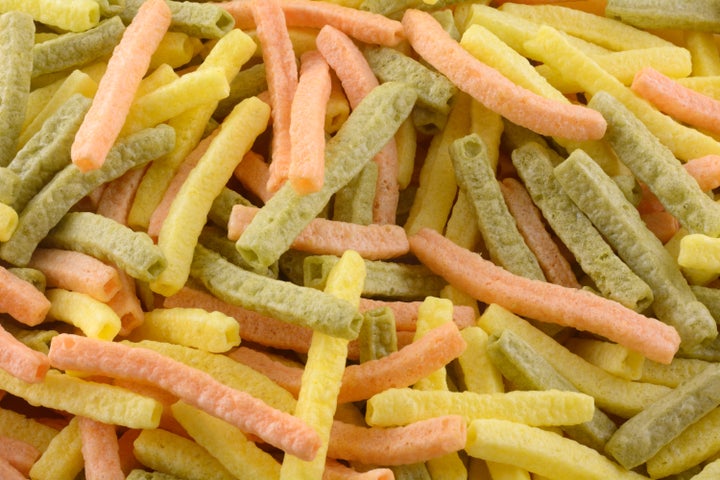
In the beginning, there was the potato. Then, in 1853, culinary legend has it that George Crum created what’s often considered to be the first potato chip, calling them Saratoga Chips. And for a long time, that was enough to keep us happy.
You might not remember exactly when you first ate a chip that claimed to basically be salad in a crinkly bag, but it was most likely sometime after 1990, which is when Manhattan caterers Dana Sinkler and Alex Dzieduszycki invented Terra Chips, made from colorful root vegetables. That distinctive black bag, as chic as a Chanel purse and twice as shiny, let everyone know that these chips were in exponentially cooler territory than that downmarket bag of Ruffles across the supermarket aisle.
In 2006, Veggie Straws, the brainchild of serial entrepreneur Jerry Bello, were introduced. They looked and tasted like orange, tan and green Cheeto-French fry mashups, and they came with a bagful of health claims, so they soon started showing up in lunchboxes and at soccer practices nationwide. When a bounty of pricey kale and seaweed chips began to be seen in the more upmarket school cafeterias, the healthy chip race was on in earnest.
These days, there’s a steady barrage of earth-toned bags of virtue-signaling salty snacks on the market. You can now buy chips made with beets, brown rice and kale. You’ll find ones made with sweet potatoes and snap peas. And you can even find protein-forward options like salmon skin and chicken chips to help you stay on your keto diet.
A Chip By Any Other Name
“We’ve really shifted our perspective on what a chip can be,” Maeve Webster, president of Menu Matters, a consultancy for food service manufacturers and operators, told HuffPost. “People do perceive them as being healthier, sort of an ‘I know it’s a chip, but it’s still more kale than I would be eating otherwise’ kind of approach. And face it, most things taste pretty good if you fry them.”
“Consumer interest in healthy chips and better-for-you snacks has been on an upward trend the last couple years and the pandemic has only accelerated that momentum,” Sandra Payer, marketing director of Calbee America, Inc., which makes Harvest Snaps, said. “As people were home and snacking more, they moved from embracing comfort food to seeking healthier snacks that made them feel good.”
“Think of these as more like an alternative to potato or tortilla chips instead of fresh vegetables.”
- Amanda Frankeny, RDN
Payer said that 85% of consumers have changed their food habits due to the pandemic, according to the International Food Information Council’s annual Food & Health Survey. “About one third of people surveyed said they are snacking more and about one in five reported they are making healthier choices.”
Nutritionists Weigh In
Craving an unctuous crunch but demanding a super-shiny health halo to go with it, we’ve stocked up on snacks we believe are significantly better for us than potato chips and are, at least in our own tortured logic, practically the equivalent of eating a serving of vegetables.
Not so fast. We talked to nutritionists to get their views, and we checked in with some chip makers to learn the why and how behind their products.
First, of all, set aside those notions that a bag of veggie chips is equivalent to a salad. “Umm, no, they’re not the same,” registered dietitian (RD) Vanessa Rissetto said. “While there are good ingredients in some of these healthy chips, they aren’t going to give you the vitamins and minerals you would find from fresh fruits and vegetables.”
“A few years ago, we started seeing the rise of plant-based foods, and chips made with plant-based foods soon followed — from chickpeas to lentils to even sauerkraut,” registered dietitian nutritionist (RDN) Amy Gorin said. “While many of these options are healthier, they’re still snack foods, and I would recommend including the whole version of the ingredients in your diet. So that means still making roasted chickpeas and still having a side of sauerkraut. And compare those nutrition labels when you shop.”
“Think of these as more like an alternative to potato or tortilla chips instead of fresh vegetables,” RDN Amanda Frankeny said. “So if you’re craving a potato chip, there’s no need to eat around it with a veggie chip.” RDN Jerlyn Jones agreed: “I like good old-fashioned unsalted potato chips, eaten in moderate one-ounce servings.”
The Good, The Bad And The Salty
Poor old potatoes have taken a beating in nutrition circles, but Gorin spoke up for the humble spud. “I recommend both white and sweet potatoes as part of a regular healthy diet,” she said. “It’s usually that additional ingredients such as oils, some of which are higher in saturated fat, and salt, are added to potatoes, which increases the calories, saturated fat and sodium content.”
“No one should eat vegetable chips and feel better for it.”
- Frankeny
Is there anything good about next-gen chips? “Processed vegetable snacks usually have a tiny boost of protein and fiber,” Frankeny said. “Sometimes they’re lower in sodium, have fewer preservatives and less fat than their potato chip counterparts. Still, veggie chips should be viewed like SnackWell’s, advertised as healthier-than-your-average cookies, but the difference is not that meaningful. No one should eat vegetable chips and feel better for it.”
From Veggie To Veggie Chip
Frankeny drew a comparison between fresh snap peas and their puffed alternative, laying out all the steps necessary to turn a fresh vegetable into a processed snack food. “First, pick and dry the snap peas. Crush them into powder and blend with rice flour for processing. Add vegetable oil to create a paste. Add salt and sodium carbonate to increase the amount of time they can sit on grocery store shelves. Shape into a pea and bake, then dust with flavoring. Your snack is now 120 calories, 6 grams of fat, 80 milligrams of sodium, 15 grams of carbohydrates, 3 grams of fiber and 4 grams of protein.”
“Compared to the real thing, you’d have to eat four cups of fresh, raw snap peas to reach that same calorie and carbohydrate range,” she said. “A more practical, satiating snack would be one cup of snap peas with tangy dip.”
If You Can Imagine It, You Can Chip-ify It
One of the veterans in the alternative chip category is JC Hanley, who founded Forager Project with his stepfather in 2013. There are five varieties of organic chips in Forager Project’s lineup. Super Greens, made with brown rice, kale and spinach, is the most popular. “We try to be simple and straightforward with ingredients, and to have our ingredients led by nature,” he told HuffPost. “Eating our chips is not the same as eating some broccoli or kale, but it’s a better version of chips than much of what else out there. And for people who want to eat organic and plant-based, and who want to be able to pronounce the ingredients on the side of the bag, we’re a good alternative.”
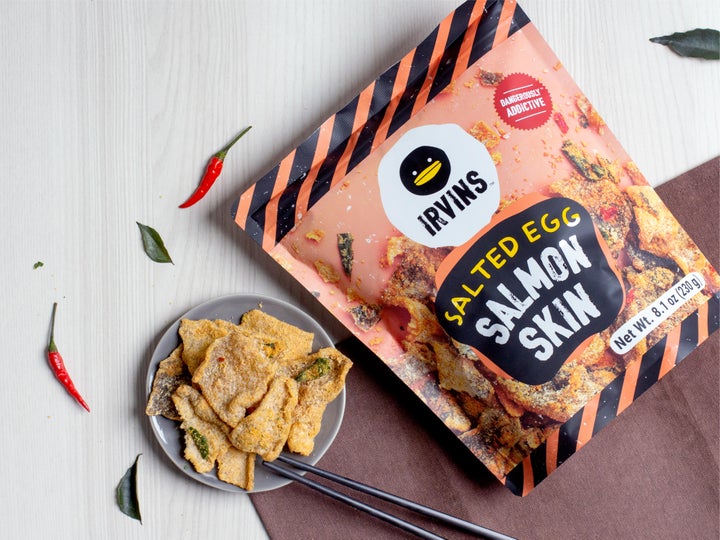
Chips also are being created for people following a keto diet, so they’re made with animal protein, not vegetables. “Our founder, Irvin Gunawan, created the original recipe for our salmon skin snacks as a menu item at his seafood restaurant in Singapore,” Jina Wye, senior vice president for Irvins North America told HuffPost. In December 2020, the company introduced Irvins Salted Egg Salmon Skin for the U.S. market. “It’s a keto-certified snack that provides marine collagen, omega 3s and protein,” Wye said. “In many respects, it’s a better alternative to a potato chip.”
Another protein-forward entry is Gone Rogue High Protein Chicken Chips, which are made from meat and baked, not fried. “They were created for protein seekers who are purposeful about their nutrition choices,” Candace Cage, brand manager at Land O’Frost, said. “They have less than one gram of carbs, 120 calories and over 17 grams of protein per one-ounce package, which is eight times the amount of protein than a one-ounce bag of potato chips.”
When Choosing A Chip, Keep This In Mind
“Try to aim for 200 mg of sodium or less per serving,” Jones said. “Look for chips with less than seven grams of fat per serving. If you’re choosing a veggie chip, make sure vegetables are listed as the first or second ingredient. You want a snack that has some fiber, no added sugars, no refined oils and no artificial colors.”
Like the creature who walks like a duck and quacks like a duck, if a snack food has the word “chip” in its name, it’s probably more like a traditional potato chip than its packaging might lead you to believe. Understanding that fundamental truth will help you be clear about what kind of food you’re eating. “If you want broccoli chips and can afford them, eat up,” Frankeny said. “In terms of health, all varieties of veggie chips are more or less what we typically think of as chips, so treat them as such.”
Here are some of the chip brands recommended — in moderation — by the nutritionists we interviewed.
HuffPost may receive a share from purchases made via links on this page. Prices and availability subject to change.

Buy Beanitos for $4.50.
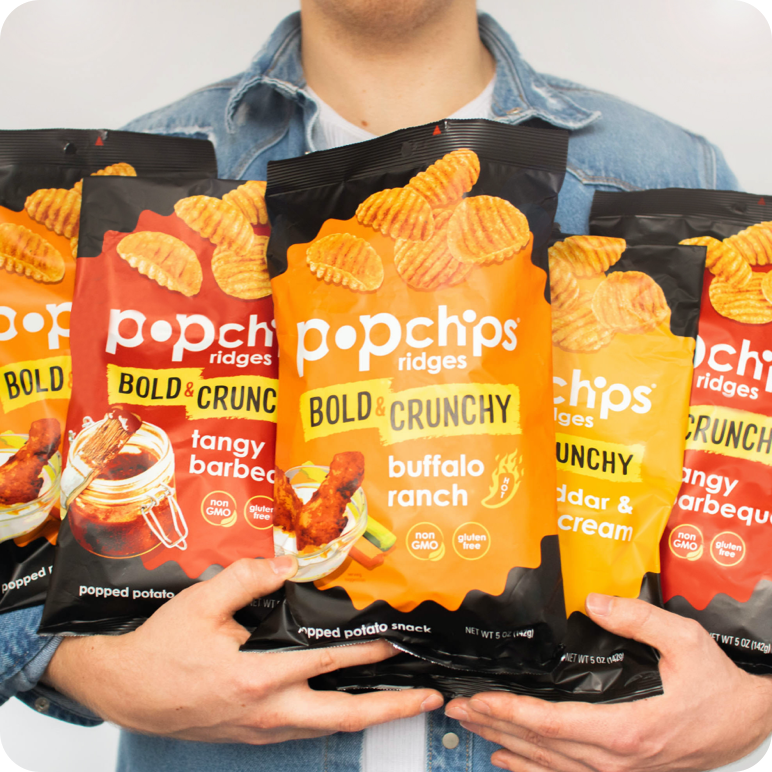
Buy Popchips for $7.49.
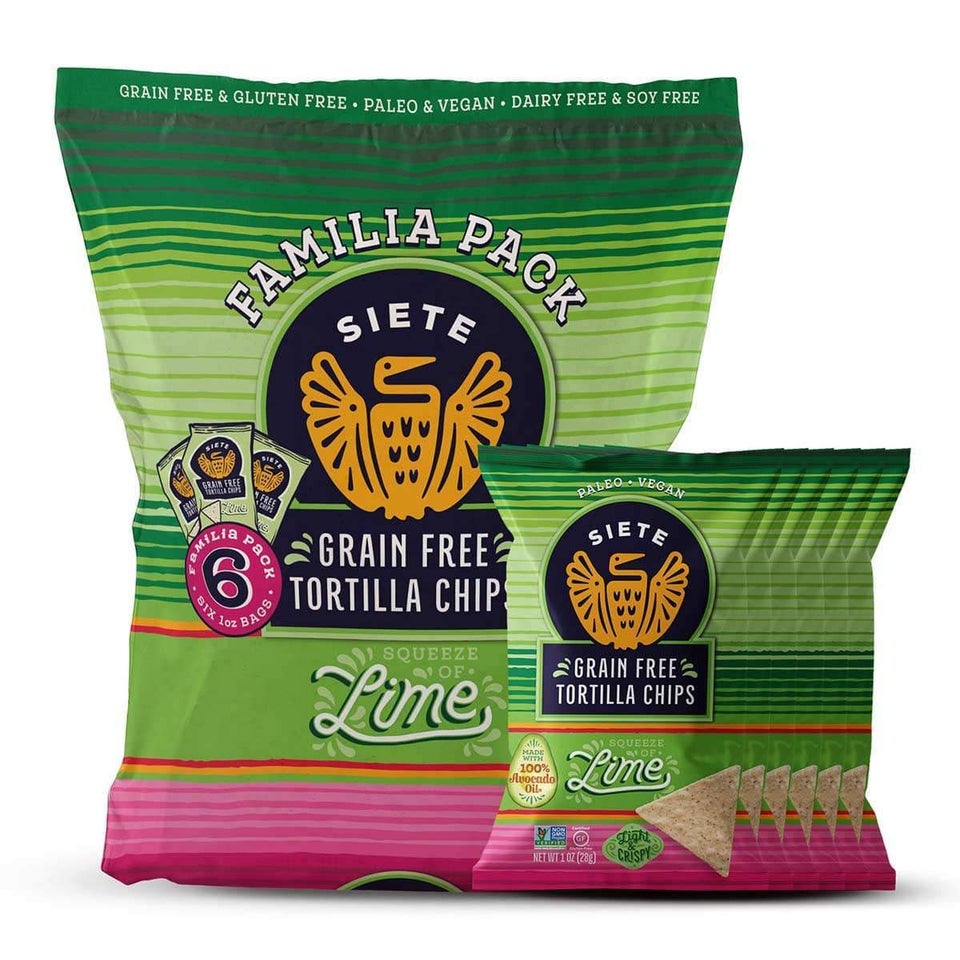
Buy Siete chips for $4.99.
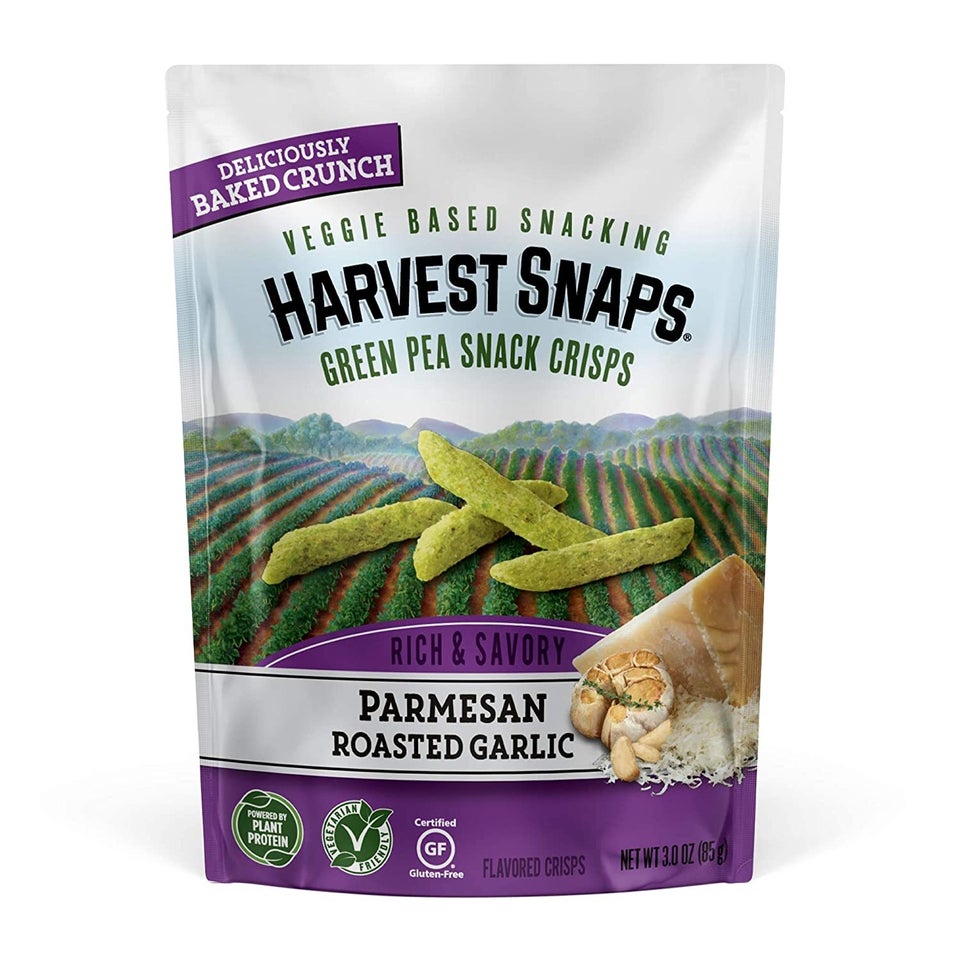
Buy Harvest Snaps Green Pea Snack Crisps for $14.99 (4-pack).
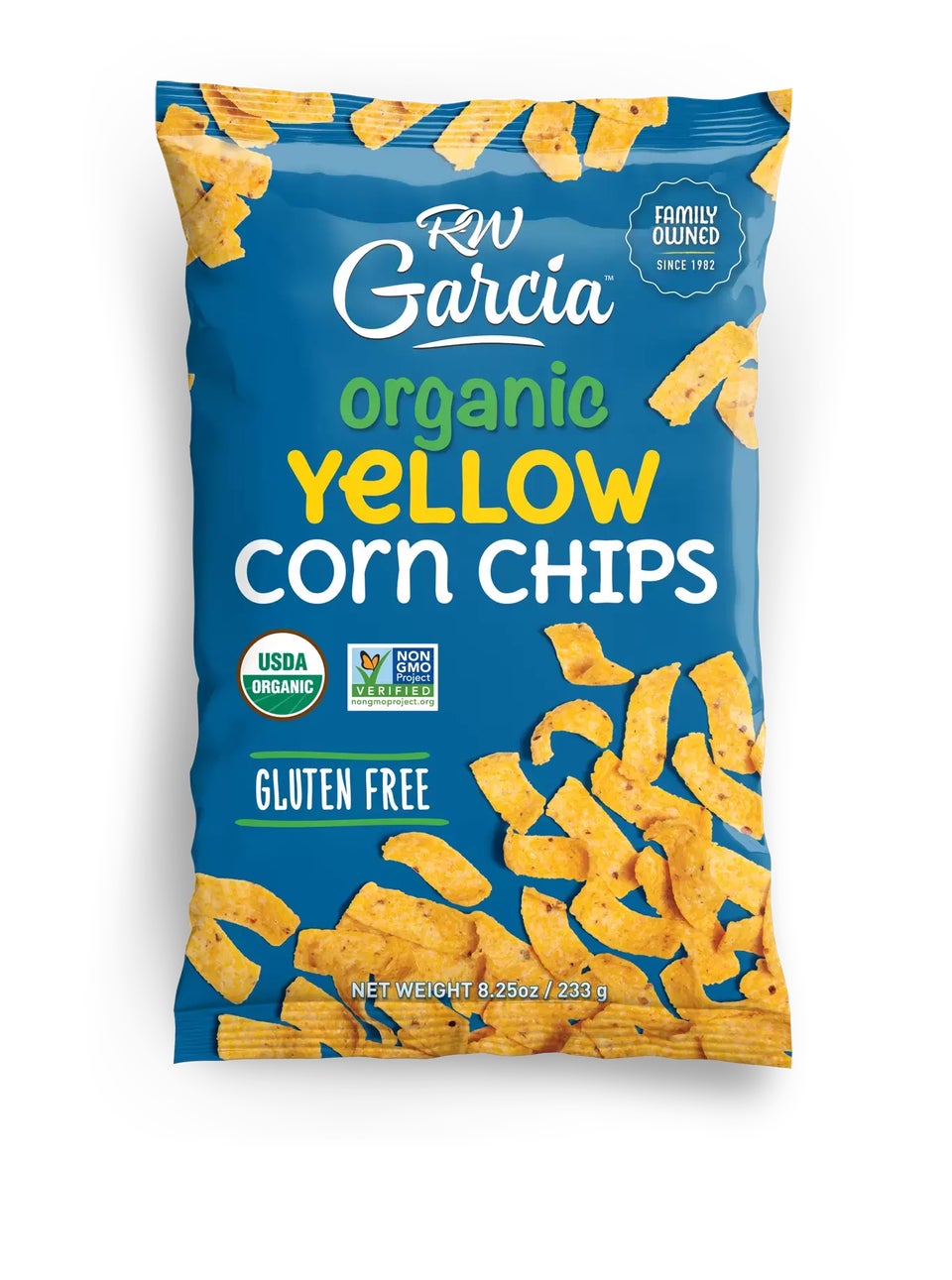
Buy Organic Yellow Corn Chips from RW Garcia for $4.49.
